‘What have you always dreamed of building?’: Hermès is taking luxury to ambitious new heights
The French fashion house invites GQ into their dream factory where fashion is no longer the focus.
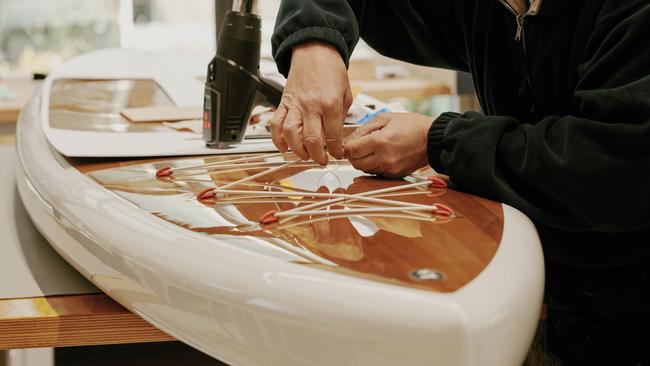
Paris in June is always chaotic, but this year really took the cake. By the time men’s fashion week had given way to the haute couture shows, the city’s landmarks were already filled with summer tourists – and that was before the deluge of Olympic spectators even began to arrive.
There was a lot on at Hermès, too. It was a few days before the fashion house’s menswear creative director Véronique Nichanian revealed her spring/ summer 2025 collection at Palais d’Iena, and then the following week the brand was due to showcase its colourful new high-jewellery collection.
But if there was any hint of fluster at the Hermès office in Pantin, about half an hour northeast of central Paris, it was well hidden. The whole place has an air of serenity. We are guided into a light, spacious showroom housing just some of the remarkable objects recently created by Axel de Beaufort and his team at Ateliers Horizons: a skateboard made from maple and printed with a lively jungle scene, a pair of skis crafted from ash, a bike constructed entirely from bamboo, a golf cart upholstered in exquisite hand-stitched leather that was custom-made for a display at a Hermès boutique in Belgium.
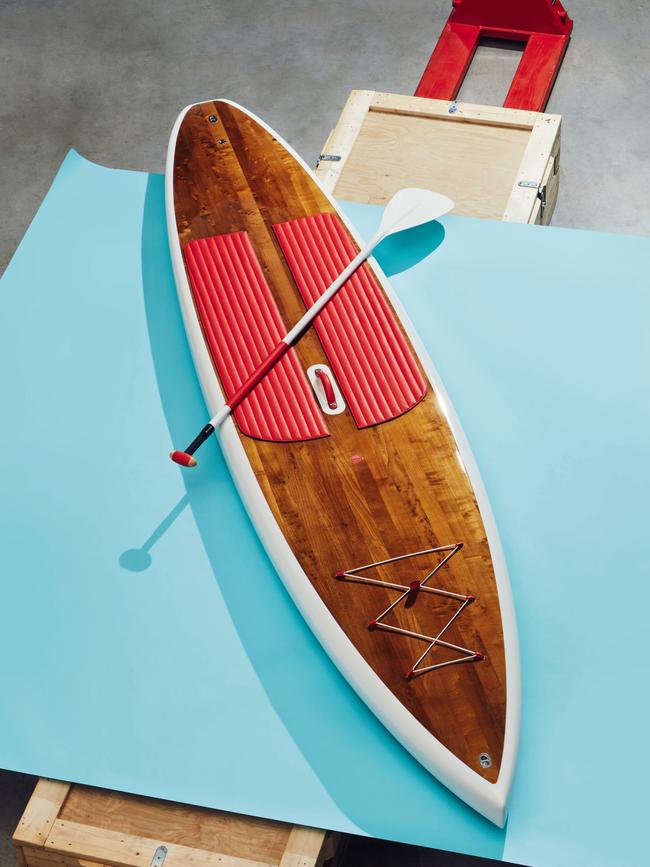
We take a seat at a dining table decorated with a plate of fresh pastries and de Beaufort soon bursts in, apologising for running a little late; he was caught up back in the workshop.
“You live in Australia?” he says, reaching for a tiny yellow Hermès espresso cup and saucer that seems to have appeared out of nowhere. “Wow. I’ve never been to Australia. I heard there’s some good surfing there!”
De Beaufort was born in Paris but was drawn to the water from a young age, an interest that took him to Southampton in the UK, where he studied naval architecture. At 22, he launched his own studio, Nacira Design, which was based in La Rochelle on France’s west coast and proved itself the ideal location to nurture his joint passions for
exceptional maritime craftsmanship and hitting the surf whenever possible.
“I was surfing a lot, a lot, a lot,” he says, taking a sip of espresso. “I was closing my office when there were waves. Everyone was surfing in my studio so when there were waves, it was like,” – de Beaufort whistles as if to say, time to go – “Let’s close it!”.
But the surfing clearly didn’t get in the way. In 2005, Nacira Design’s first commission won yacht of the year at the London Royal Ocean Racing
Club and the studio received a Milano Nautical Design Award for its sleek 20-metre carbon-fibre racing yacht called Shamlor.
“I love designing [everything] from the shoebox you put your shoes in, to the mast,” says de Beaufort of his meticulous approach. “I love the idea of things being completed entirely, every detail.”
In about 2009, de Beaufort met Pierre-Alexis Dumas, the current artistic director of Hermès and the great-great-great-grandson of the company’s founder, Thierry Hermès. The pair hit it off and de Beaufort began consulting on a sailing project.
“I came to help them and we created a really good relationship,” he says, “so they proposed me to stay.” When de Beaufort and Dumas began working together, Hermès sur-mesure (Hermès custom-made, as Ateliers Horizons was then known) consisted of just a handful of artisans working on special projects beyond the scope of the house’s other departments.
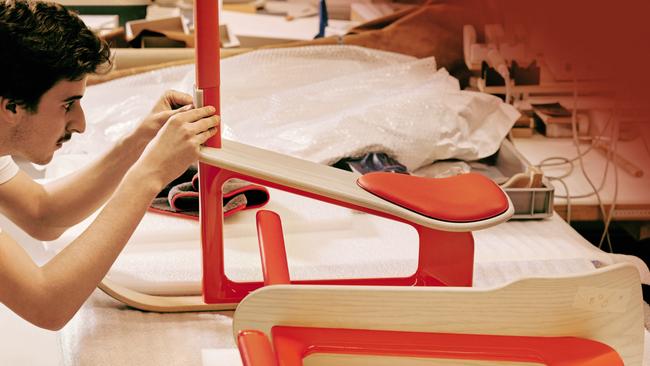
These 16 divisions, known as Hermès métiers, cover jewellery, watches, tableware, fragrances, ready-to-wear and more. Together they have helped turn the house into one of the fashion world’s most successful companies. This July, Hermès announced a 15 per cent growth in revenue for the first half of the year, bucking a trend that has seen widespread declines across many other luxury brands.
But perhaps few métiers capture the spirit of the house quite like Ateliers Horizons. After all, Hermès was founded in Paris in 1837 as a workshop offering bespoke harnesses and bridles for horse-drawn carriages.
When de Beaufort joined as creative director in 2012, he was tasked with keeping this artisanal spirit alive by dreaming big: what would a car produced by Hermès look like? Or a boat? A plane? Anything at all. Today, he and his team of about 50 work to answer those questions and more. They have outfitted the interiors of private jets, yachts and luxury cars, but they routinely turn their attention to smaller, more sentimental requests. One client commissioned a bag made especially to carry an apple for a friend who used to take one to work with them every day; another asked the team to build a birdcage for their beloved parrot, which turned out to be more like an avian manor that took more than two years to complete; there was a woman who wanted to gift her husband a bespoke Hermès rickshaw.
“Initially she was thinking we’d buy a rickshaw in Kyoto and upholster it here,” de Beaufort recalls of the project. “I was like, ‘No, let’s do a rickshaw in France. Then it’s really ambitious!’.”
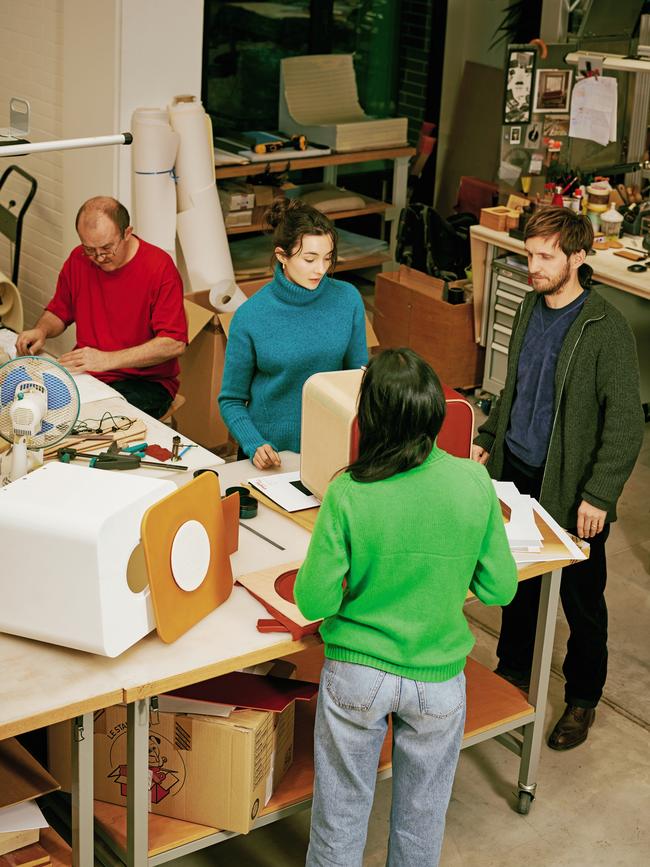

Being really ambitious is what Ateliers Horizons is all about. This is not the place for cutting corners. Instead, de Beaufort and his team thrive on fresh challenges, even if that means spending years on a design question or tracking down craftspeople whose skills might otherwise be lost to time.
His current obsession is sound design, which led him to produce a range of speakers made from wood and Italian calfskin. De Beaufort was vexed by the fact that most sound systems are either portable or domestic, so he set out to make one that could be both. The result is the Odyssee Terre design, which features a portable “satellite” speaker that can be carried around for when you’re on the move but can also be docked in the larger stationary base for when you’re at home.
“I have friends who are really well-known singers with recording studios, so now this is what excites me a lot,” he says, before launching into a detailed explanation of the speaker’s acoustic specifications and frequency range.
This is not his only venture into sound. In the corner of the showroom is one of his favourite projects, a cylindrical structure atop a rectangular base. At first glance, it looks like some kind of elegant cabinet, but in fact it is a jukebox with built-in speakers, its exterior clad in vibrant blue calfskin.
“I met this guy in England who has been making jukeboxes for three generations. These guys are super craftsmen and they are doing things in-house,” recalls de Beaufort, who went to see them about a potential collaboration. “The grandfather of the company came to the meeting – he was no longer working; he’d retired – so I asked him, ‘What’s the one thing you’ve never done because it was too expensive or you didn’t have the budget?’.”
The answer was to build a jukebox that could house full 12” albums, rather than flipping between a selection of smaller, more practical 7” singles.
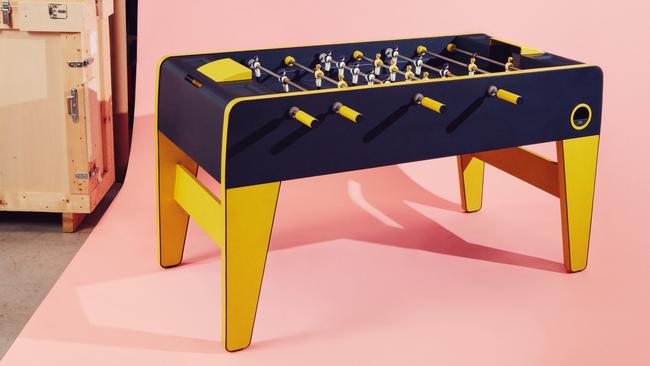
“I was like, ‘Wow’,” says de Beaufort, who was immediately taken with the idea. “Today we’re shuffling our music all the time and I would love to offer an object that will make you appreciate taking the time to listen to albums again. So that was it!”
De Beaufort picks a croissant off the plate in front of us before we head off to the showroom’s second level. “We only do a plane every two or three years,” he says as we climb the stairs. They’re time- consuming jobs and you get the feeling they’re perhaps not the most creative endeavour. But there’s also the fact that while his workshop has grown since he arrived at Hermès, it is still a small operation and there’s only so much they can do.
While some might assume the wait times and limited runs are self-imposed restrictions in the interest of driving up cost and exclusivity, they’re actually imposed by simple mathematics; the reality is there are only so many hours in the day and people to work them. Crafting a one-of-a-kind bag might take a year or more.
“Six months, you can forget it,” he says of well-heeled clients pushing for a speedier turnaround. “The bags are handpainted so this is really an artistic work and we need to find the right artisans. People, when they come here and they have a tight schedule, unfortunately sometimes we’re not able to commit.”
The second floor showcases more recent creations: a foosball table, a canoe, a portable calfskin cabin that could be attached to a matching Hermès bicycle. “This is just a prototype,” he says, pointing his croissant at a set of DJ decks covered in immaculate hand-stitched leather. “It is now in different stores and we’ve been selling loads of them!”
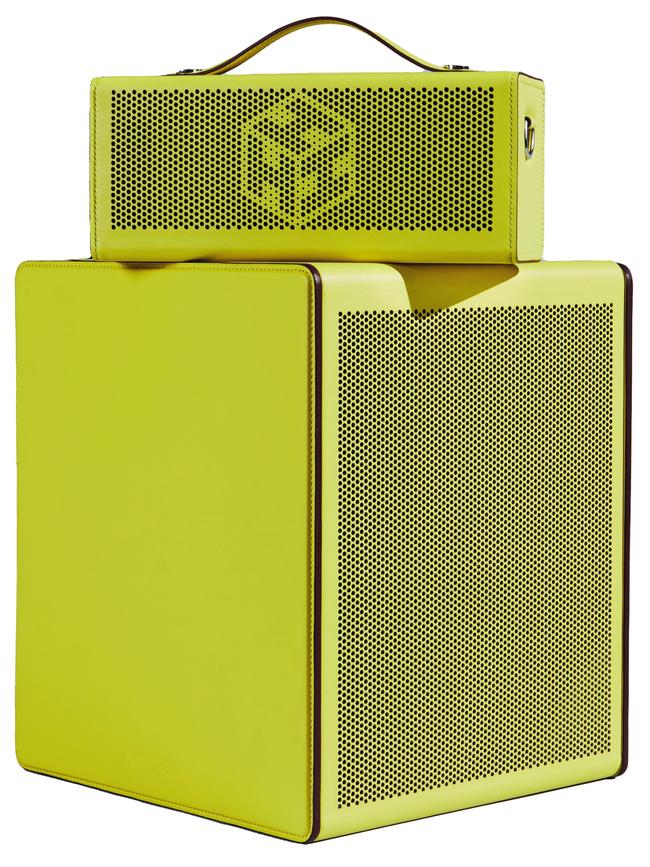
The objects are so remarkable it’s easy to forget they are made to be used. “They all absolutely need to be functional,” he says, almost offended at the suggestion. “I wouldn’t be able to design an object that is not functional. This is art [and] I don’t consider myself an artist at all. I’m a designer.”
We make our way into the workshop, where artisans busily work on de Beaufort’s latest designs. There are piles of leather samples carefully chosen for specific projects; on the floor is a series of stencils that will be used to cut them to shape. A plane interior is under way, and there are storage units and seating waiting to be finished. Nearby is a supercar – the client’s second – its bare interior ready for its Hermès upgrade.
It feels as though we’ve wandered into a kind of Santa’s workshop for the wealthy. De Beaufort is open and generous with his time, but it is clear the department operates with a level of discretion that borders on secrecy. Client identities are strictly off limits and the publicist with us seems to wince when de Beaufort strays too far into specifics on how many speakers they produce each year: Hermès doesn’t talk numbers. An inquiry about what some of these projects might cost is also politely sidestepped.
Perhaps that’s no surprise. After all, you know what they say about prices: if you have to ask …
In many ways, de Beaufort’s mission comes back to what he said about the jukebox: what have you always dreamed of building? But Ateliers Horizons is not simply about catering to the whims of the well-to-do. Hermès has taken a desire for excellence and turned it into one of the fashion world’s most ambitious enterprises, a place where the art of creation is almost as important as the creation itself.
“Doing very big projects, like boats, can take five years, but when it’s finished, it’s kind of sad,” the designer explains, turning pensive, “because the process of making things needs to be an experience, something that will be part of the object.”
Reviving forgotten crafts, scouring the globe for experts in their field, discovering new methods and materials: it all forms part of the finished product. Seeing de Beaufort survey the workshop, his eyes filling with wonder as he watches artisans quietly working on their creations, you get the sense that Ateliers Horizons might not be making artworks, but these aren’t just objects, either. De Beaufort and his team are bringing dreams to life.




To join the conversation, please log in. Don't have an account? Register
Join the conversation, you are commenting as Logout